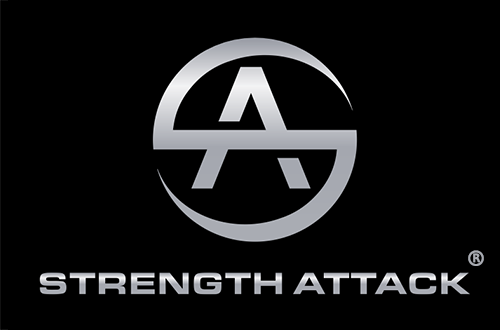“You are what you eat,” as the saying goes. Nutrition provides energy to the body and aids in the growth of muscle, bones, and organs. The difference between healthy and unhealthy people is how well these things are taken care of. People can feel better by eating well. When someone is feeling well, they are more active and willing to take on new challenges.
The discussion in this article focuses on the three major nutrients of carbohydrates, protein, and fat.
1. Carbohydrates
- Make stored energy available (from glycogen and fat).
- 1 gram contains 4 calories and provides instant energy.
- Protein conservation (the practice of not using protein as a source of energy)
- Aid in fat burning
- It is ideal to consume 55% of your daily food intake.
Carbohydrates are one of three macronutrients, or “energy-producing nutrients,” and can be divided into monosaccharide, disaccharides, and polysaccharides. Carbohydrates are the primary source of energy for humans and other animals. They play an important role in the body, providing energy for muscle work and providing instant gratification when consumed.
Carbohydrates come in three varieties: sugars, starches, and fiber. Sugar comes from two sources: sucrose (table sugar) and fructose (fruit sugar). Lactose (milk sugar) is a third type of sugar made up of glucose and galactose molecules.
Although cellulose cannot be used as a fuel by humans, it serves as the structural framework for plants. The body can digest cellulose and use it to generate energy and feed beneficial gut bacteria.
Carbohydrates are the most important macronutrient in our diet because they provide energy to the body. According to research, carbohydrates are used in a variety of activities.
Walking, for example, uses less than 50% of the carbohydrates consumed in an activity. A medium jog uses 50% to 75% carbohydrates, while running uses more than 75%.
People who are physically active should consume the appropriate amount of carbohydrates for their sports and energy requirements, which vary from person to person and activity to activity. If you don’t have time to eat, however, protein and healthy fats should always be included. Most people require 25 to 35% of their calories from carbohydrates.
Common food items:
| Food | Total Calories |
| Apple | 84 |
| Orange Juice | 112 |
| Corn Flakes | 104 |
| Potato Baked | 224 |
| White bread (1 slice) | 65 |
| Banana | 121 |
| Carbonated drink (1 can) | 164 |
NOTE: Calories for individual food items may vary slightly depending on brand, so read all food labels before purchasing.
2) Proteins:
- Build and maintain muscle, bones, and organs.
- It contains 4 calories per gram.
- Hormone production is controlled by the transportation of nutrition to the appropriate body tissues.
- When exercising, keep your blood volume and sweat rate constant.
- It should account for 15% of your total daily calorie intake.
You should not consume more than 1.8 grams of protein per kilogram of lean body weight. This will be covered in a future article.
Protein is one of the most important nutrients for bodybuilders and strength athletes. It aids in muscle growth, tissue repair, and hormone regulation.
Protein is far more effective when consumed in small doses throughout the day rather than in large doses all at once. 25-30 gram servings at a time, 5-6 times per day I was able to maintain my protein intake, but I would not recommend exceeding 200 grams of protein per day.
As an example : Greek yogurt is high in carbohydrates and high in protein; for example, 100g contains approximately 10g protein and 3.6g carbs.
Protein is essential for the general population as well as those recovering from physical activity or injury. Protein aids digestion, promoting cell growth and compensating for muscle loss. It also aids in post-workout recovery by replenishing glycogen, giving you more energy for future workouts. As a result, protein requirements vary according to physical activity, age, and body weight. Protein intake should be tailored to the individual’s daily requirements for healthy people. The average healthy adult requires 0.36g of protein per kg of body weight per day. (research is ongoing and may differ)
Protein is an essential component of a balanced diet. Protein is composed of amino acids, which are essential for the body’s proper functioning and growth. Protein requirements vary according to age, weight, gender, and activity level.
Common food items:
| Food | Total Calories |
| Tuna (3 oz. canned) | 129 |
| Chicken breast roasted | 185 |
| Crab meat (1 cup/8 oz.) | 123 |
| Salmon (3 oz. canned) | 113 |
| Cheddar Cheese (1 oz.) | 109 |
| Shrimp (3 oz.) | 97 |
NOTE: Calories for individual food items may vary slightly depending on brand, so read all food labels before purchasing.
3) Fat:
- It acts as an insulator for your body in extreme temperatures.
- Each gram contains 9 calories.
- Transport essential nutrient ( vitamin K, D, A, and E).
- Protects against concussive forces
- Should make up 25% of total daily calories (primarily from healthy fat).
Meat is the most common source of saturated fat in the human diet. A typical serving of fatty meat can contain 28 grams, or about 8% of your daily caloric intake. .
Classifications that are frequently used include:
- Triglycerides are found in a wide range of dietary fats and oils.
- Meat and dairy products are high in saturated fat, which raises cholesterol levels. Low-density lipoprotein (LDL) is the primary carrier of cholesterol and lipids in the blood.
- High-density lipoprotein (HDL) = Transports lipids from storage to the liver for metabolism (cholesterol removal).
Low HDL cholesterol levels are linked to an increased risk of coronary artery disease. Triglycerides- Fat stored in adipose tissue, the body’s main energy source. Primary fat stores, they are also used as fuel and transported to other tissues as a form of metabolic energy.- They are absorbed directly into the cells and used as a source of fuel when glucose is not available (e.g., fasting or starvation).
Common food items:
| Food | Total Calories |
| Butter (1 tbsp.) | 99 |
| Coconut (raw, 1 cup) | 303 |
| Avocado (1 whole) | 371 |
| Olive Oil (1 tbsp.) | 126 |
| Feta Cheese | 74 |
| Doughnut Plain | 216 |
| Chicken Breast (fried) | 354 |
| Whole Milk | 148 |
NOTE: Calories for individual food items may vary slightly depending on brand, so read all food labels before purchasing.
Butter is a dairy product made by churning fresh or fermented cream or milk. It is made up of butterfat, a white soft solid fat, water, and salt. Coconut is the fruit of the coconut palm. It has a hard outer shell with three layers: the exocarp (outermost), mesocarp (middle), and endocarp (inner) . The endocap is the fibrous layer that can be used to make fiber or palm oil. Coconut milk is made from grated coconut flesh and water that has been treated with lime juice or tamarind extract. It has a thick, creamy texture and a sweet flavor. Coconut milk contains 6-8% fat (depending on the variety), making it richer than dairy milk of the same quantity.
Never forget to EAT IN RELATION TO YOUR LEVEL OF ACTIVITY AND HEALTH LEVEL.
Eating more food and consuming more calories than you burn will result in fat gain and make you unhealthy. Furthermore, eating less food and consuming fewer calories than your body requires for your level of physical activity will cause you to lose lean muscle mass and become unhealthy. Eating enough food and ensuring you have enough fuel for the day’s activities will help keep your body healthy and strong!
Our forefathers primarily ate meat, vegetables, fruits, nuts, and seeds. We must learn to eat fewer processed foods that are high in sugar and carbohydrates.
Processed foods are unhealthy because they have been altered by machines or chemicals in ways that alter their nutritional value.
Most meats, vegetables, fruits, nuts, and seeds have similar macronutrient profiles. Processed foods are typically higher in carbohydrates and sugar than natural foods of the same type.
Keep an eye out for our blog on theman’scave CAVE MAN’S/WOMAN’S or woman’s diet.

